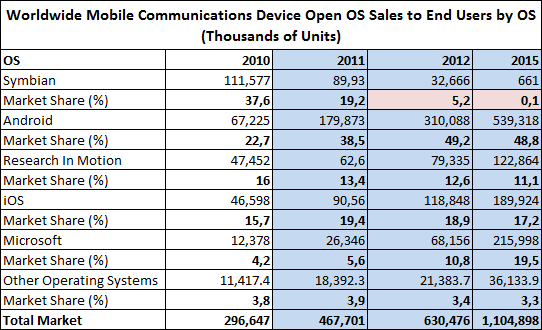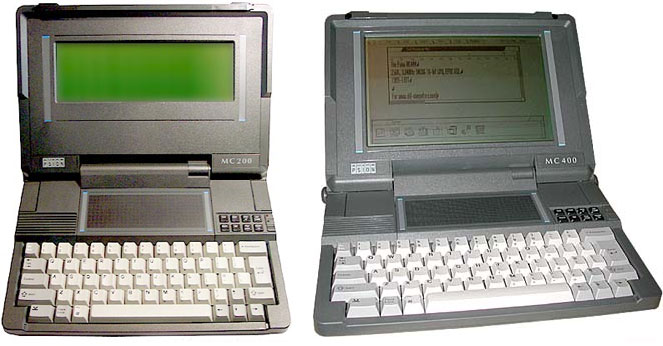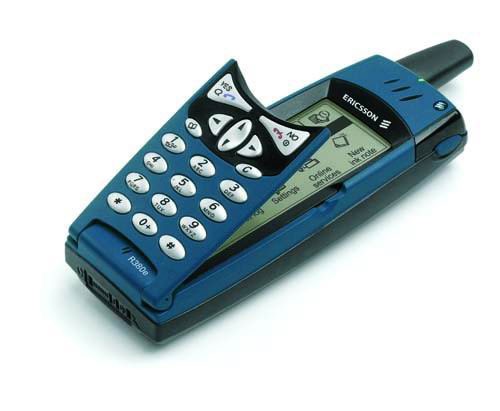Symbian Sunrise and Sunset
Introduction
I don’t want the article to look like picking a hedgehog’s corpse with a fork, so I’ll say right away that this is a farewell word to a good system that is becoming a thing of the past, because its developers or owners were not sufficiently far-sighted or even why. In the prime of his life, Symbian occupied more than 70 percent of the smartphone market and still holds a significant market share, but this is most likely an inertial component and a matter of time. Regarding the future of the system, I fully agree with the Gartner forecast:

Story
Initially, Symbian was named EPOC16 or simply EPOC and was developed by Psion in the late 80s for its handheld, and not very handheld, computers. The first devices based on this OS were the Psion MC-200 and MC-400 series called “SIBO” (Sixteen Bit Organizers). They were introduced in 1989, and had extremely unhealthy at the time characteristics: Intel 80C86 processor - 7.68 MHz, 256 Kbytes of RAM, 256 Kbytes of ROM, 4 connectors for SSD boards, a speaker and a microphone. The MC-200 screen had a resolution of 640x200, while the MC-400 had a resolution of 640x400. The size of these devices were from the current laptop and weighed almost 2 kilograms.

')
Later, in 1991, a much lighter and smaller Psion Series 3 device appeared on this platform, which was produced and improved until 1998. Unlike other models, this device had a 3aR modification with a Russian keyboard and operating system.

The system was further developed in 1997 with the acquisition of thirty-two bits. The old system in order to avoid confusion begin to call EPOC16 or SIBO. And the new name is EPOC32 - it will become Symbian later. In 1997, the first device based on EPOC32 Release 1 was released, it was Psion Series 5, this antiquity was very detailed here . Later on, several devices were released on the EPOC32 platform up to Release 5: Psion Series 5mx, Psion Series 7, Psion Revo, Diamond Mako, Psion netBook.
Even during the development of EPOC32, financial difficulties forced Psion to think about the possibility of licensing the system for use by third-party companies. For this purpose, in 1997, the development department was withdrawn to a separate company, Psion software. In November 2000, the Ericsson R380 appeared based on the ER5u system, which is retrospectively called Symbian 5. Despite the fact that the manufacturer called it “Smartphone”, it was not a smartphone in the modern sense, it was impossible to install third-party applications, the OS was closed.

In early 2001, the Psion system got its current name - Symbian OS. The system has become the basis for the development of new lines of smartphones. The first device on the new Symbian 6 was the Nokia 9210 Communicator, released in June 2001. This Nokia device became the first truly open device on Symbian.

From now on, Nokia and Ericsson will produce the bulk of the devices on this base. By going in completely different ways, these companies developed several UI variants at the same time, including the UIQ (User Interface Quartz) software platform developed by UIQ Technology (with funding from Ericsson and later Sony Ericsson). Still, the most widely used platform Series 60 from Nokia. The first-born on the future S60 was the Nokia 7650. The slider with a camera and an operating system on which third-party applications can be installed was just a breakthrough in 2002.

With the update of Symbian to version 7 in 2003, a whole bunch of devices appear on different platforms, many of which are still alive today: UIQ (Sony Ericsson P800, P900, P910, Motorola A925, A1000), Series 80 (Nokia 9300, 9500), Series 90 (Nokia 7710), Series 60 (Nokia 3230, 6260, 6600, 6670, 7610), and the Siemens SX1 is the first and last phone from Siemens Symbian.

In addition to the Series 60, Nokia also develops the Series 80 (for the 9300, 9500 communicators) and the Series 90 for the only device - the Nokia 7710, which in 2004 looked very cool.

Later on, Symbian versions 7 and 8 added support for new technologies and communication standards. Also improved user qualities and convenience of the system. The 7th and 8th versions retained backward compatibility with almost all applications of 6-7-8 versions.
In early 2005, Symbian 9.1 was released on a completely new kernel, backward compatibility was lost, but the system received many changes and innovations, many of which related to security, so, with this version of the application, they needed to sign code to gain access to certain APIs.
In the period from 2005 to 2007, the System received several updates: 9.2 9.3 and 9.4 in which support for new technologies was implemented (HSPDA, Bluetooth). In version 9.4, touchscreen support appeared - the market had long demanded this, but according to many, this was done too late.
In 2008, Nokia, Sony Ericsson, Motorola and NTT DOCOMO officially announced the combination of Symbian OS, S60, UIQ and MOAP (S) in order to create a single open mobile platform. Together with AT & T, LG Electronics, Samsung Electronics, STMicroelectronics, Texas Instruments and Vodafone, the non-profit organization Symbian Foundation was created. Nokia announced the purchase of the remaining non-owned shares of Symbian Ltd., after which it will be possible to provide the source codes of the system to members of the Symbian Foundation. This step should contribute to the promotion of Symbian OS in the market of mobile systems. At that time, the Symbian Foundation numbered 40 companies.
Further in 2009, Samsung announced it was abandoning the use of Symbian since 2010, and in 2010 Sony Ericsson also refused Symbian, gradually all members of the consortium refused to use the system. Nokia, left alone with its brainchild, continues to update it to this day. The latest versions at the moment are Symbian Anna and the recently announced Symbian Belle.
Summary
After Nokia’s announcement of the transition to the Windows Phone platform, it became clear to everyone that Symbian’s time had passed. Most likely, the reason for the stagnation of the system was the sluggishness of its manufacturers, and the complexity of developing for Symbian, since C ++ is the main tool for writing applications. Also, in my opinion, support for hardware graphics acceleration (Nokia N8-2010) was introduced very late, without which the development of modern games is impossible (the same angry birds). However, in many moments Symbian has been ahead for many years. Convenience personalization, full multitasking, thousands of applications. 4 years in a row on the basis of Symbian produced the vast majority of smartphones. In 2006, the market share of the system was a record 72.8%, but since 2007, the share has been steadily decreasing. This is due, of course, to the emergence of such competitors as iOS and Android, which respond much faster to market and development requirements for which are easier and faster.
Source: https://habr.com/ru/post/128361/
All Articles